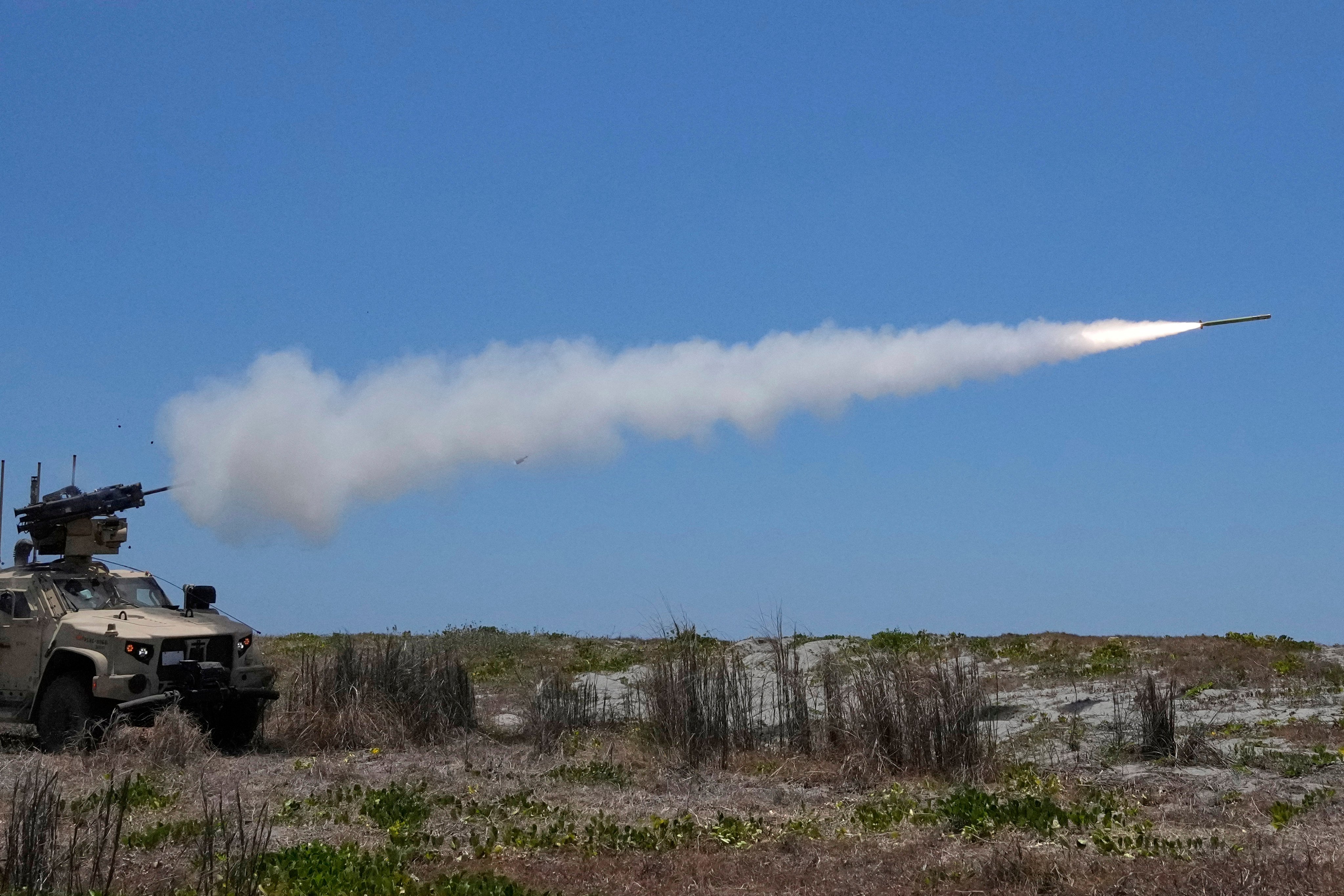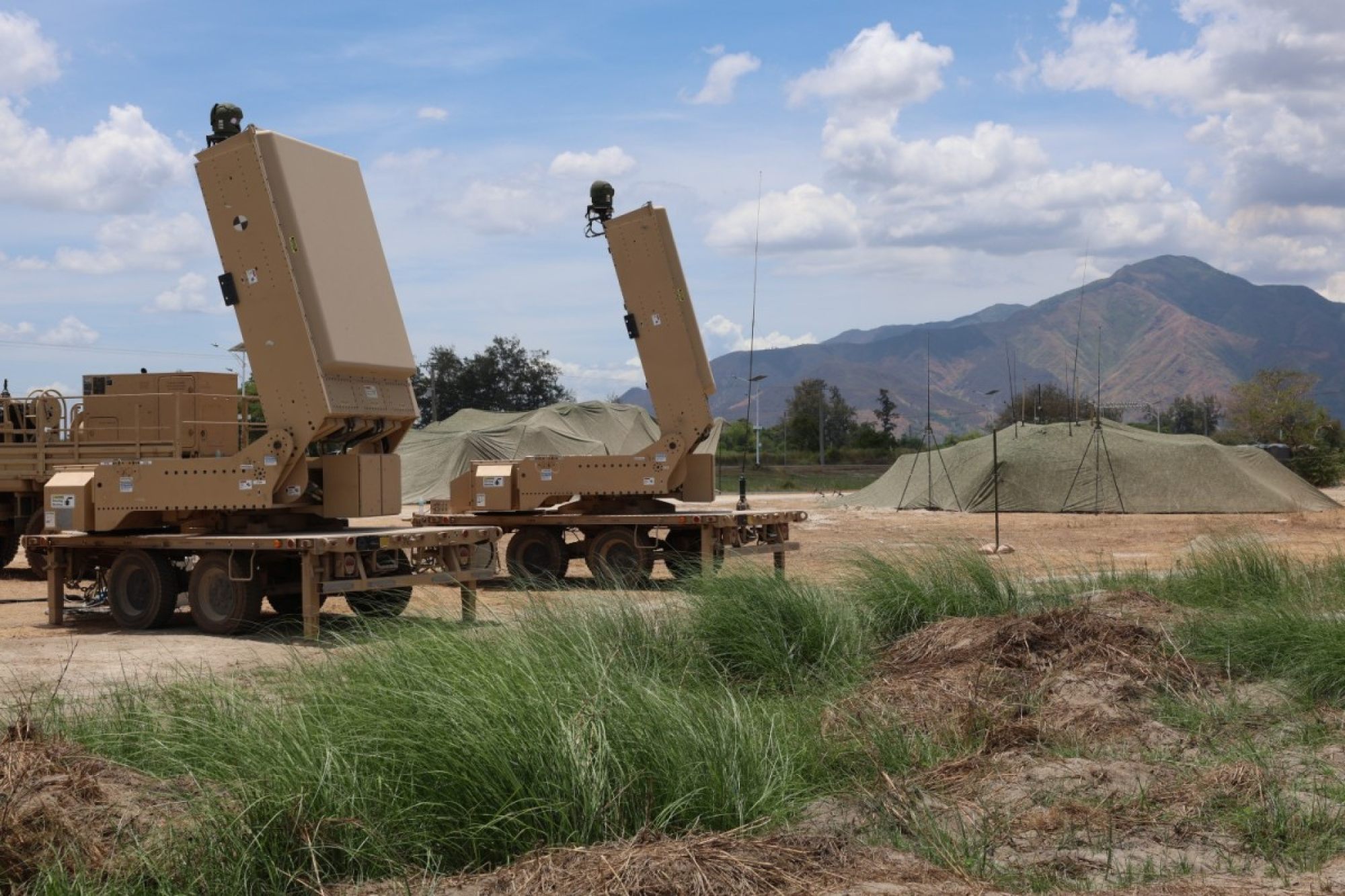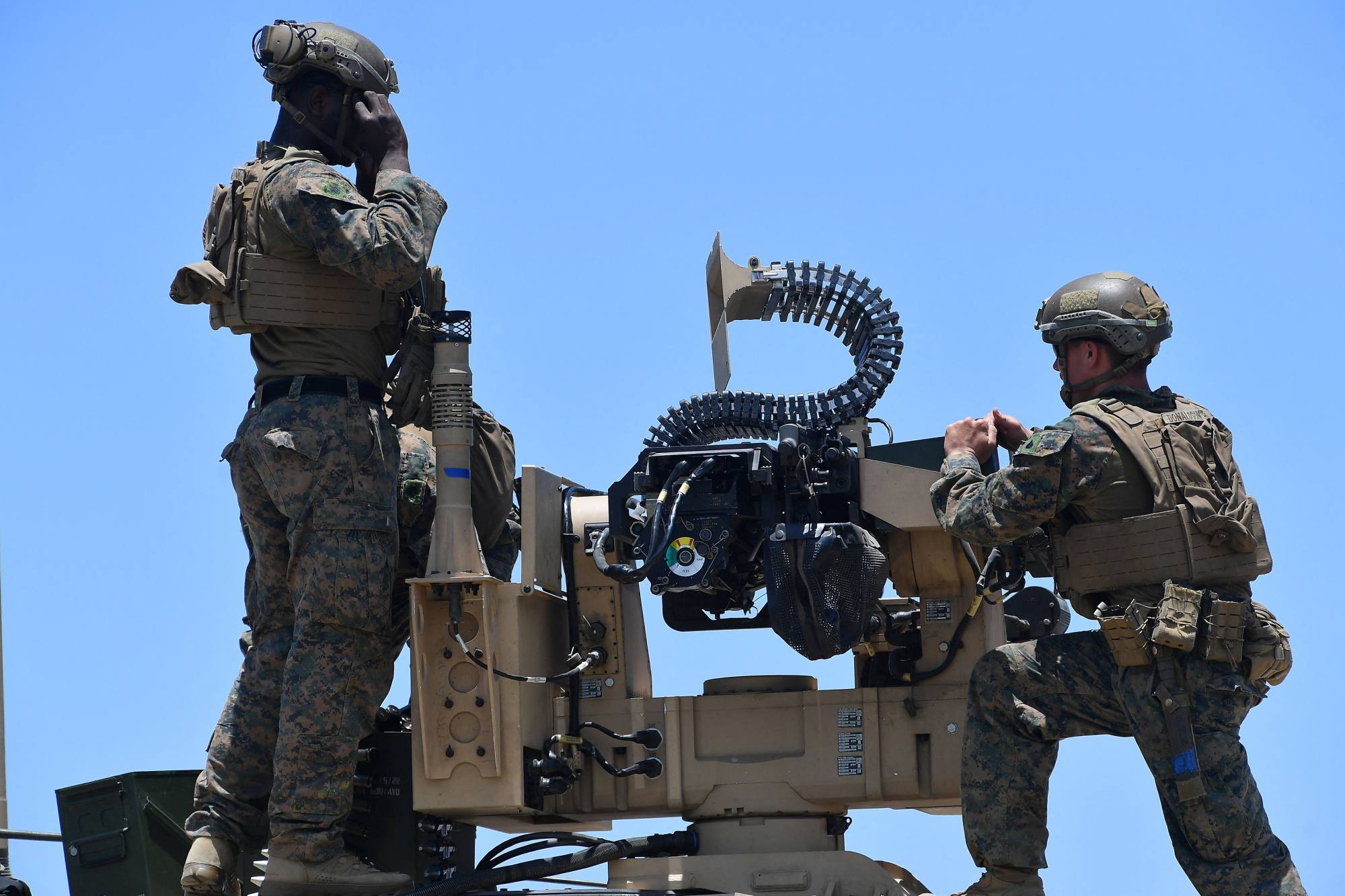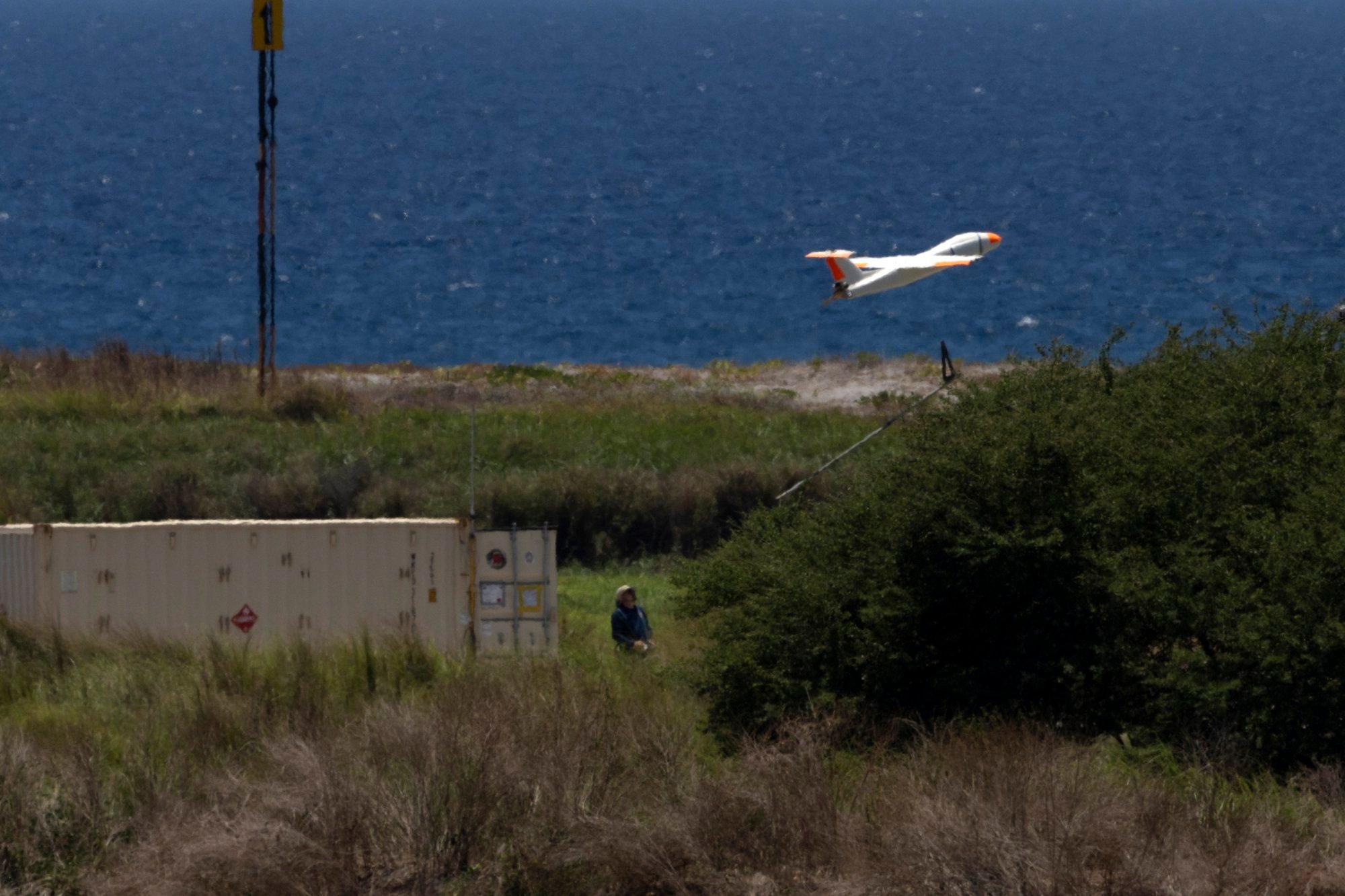Philippines-US drone drill signals rising threat in South China Sea of unmanned weapons
The drill involving two counter-drone systems comes after China’s reported use of drones in the disputed South China Sea in recent months

A drill on the use of cutting-edge microwave weapons to disable drone swarms during a joint defence exercise involving the United States and the Philippines is seen as a strategic signal by the allies to step up efforts in tackling unmanned military threats in the contested South China Sea.
Conducted on April 28 as part of the annual Balikatan joint exercises, the trials involved two advanced counter-drone systems: the high-powered microwave component of the integrated fires protection capability (IFPC-HPM) and the fixed site-low, slow, small unmanned aerial system integrated defeat system (FS-LIDS).
Both were deployed at a naval station in Zambales province, which faces the disputed waters claimed by China and several other Southeast Asian countries.
The broader message behind the drill is to signal that drones are reshaping the threat landscape in Asia, according to analysts.
“During this test, we were able to demonstrate that we can successfully defeat drone swarms in a tropical environment using layered effects,” said US Army Captain Bray McCollum, commander of the 1-51 air defence artillery’s IFPC battery, in a statement released on Thursday.

High humidity and heat pose unique challenges for the deployment of weapons utilising microwave and other sources. A demonstration of these weapons to operate smoothly in a tropical environment, such as the Philippines, underscores their potential to nullify the rising threats of drones, according to analysts.
The IFPC-HPM uses concentrated microwave energy to disable the electronics of multiple drones simultaneously. It was tested alongside the FS-LIDS, a system developed to detect, track and disrupt small unmanned aerial systems – and previously fielded in conflict zones such as the Middle East.
According to a US Army release, the two systems work in tandem to ensure precise identification and neutralisation of drone threats.
The Zambales exercise marked its first deployment of the IFPC-HPM in Southeast Asia.
Drones as deniable threats
The timing of the drill comes at a critical juncture, with China having reportedly used drones around disputed maritime features in the South China Sea in recent months, according to analysts. Beijing planned to focus more on such unmanned, elusive and low-cost weapons without having to confirm their deployment, they added.
Abdul Rahman Yaacob, a research fellow with the Lowy Institute’s Southeast Asia Programme, told This Week in Asia that drones were likely to come into play should war break out over the disputed waterway.

“In the event of a military conflict in the South China Sea, we could likely see the Chinese using drones for surveillance and strike campaigns,” Rahman said. “Drones could be used to target either the American or Philippine air defence systems, anti-ship missile sites and other critical infrastructures, such as military sites and command centres, similar to what we have seen in Ukraine.”
Yaacob noted that Ukraine had used many drones to blunt several Russian offensives, while the Houthis had also attacked US warships with drones in the Red Sea.
Sherwin Ona, a visiting fellow at Taiwan’s Institute for National Defence and Security Research, said drones could pose a threat to Philippine airspace due to their elusiveness and capacity to disrupt military formations, and they could be countered by using microwave systems.
Calling for additional layers of defence against drones, Ona said: “We must have the ability to detect and have cost-effective systems like guided rockets and anti-aircraft artillery systems that can intercept and destroy these objects.”
Arnaud Leveau, an assistant professor of geopolitics at Paris Dauphine University, said that in a regional crisis, drone swarms could overwhelm detection systems without triggering any confrontation between rival nations.
“Seen in this light, the joint US-Philippine testing of systems is not merely a technical milestone but also a political signal: it suggests a recognition that future aerial threats may be non-traditional – small, autonomous, and deniable,” he added.

Cost-effective directed-energy weapons
Chris Kremidas-Courtney, a senior visiting fellow at the European Policy Centre in Brussels, said directed energy weapons (DEW) were key in countering drone attacks in the modern battlefield.
“DEW are being integrated into air and missile defence plans as cost-effective replacements for missile-based interceptors,” Courtney said. The ability of such weapons to neutralise other fast-moving targets, such as rockets, offered key advantages to the defender, he added.
It is financially unsustainable to launch, for instance, a Patriot missile costing more than US$3 million each against a thousand-dollar drone, according to Courtney. In contrast, the operating cost of using one DEW could be as low as a dollar for a laser shot or a microwave pulse, he added.
“This re-establishes cost symmetry, deterring massed attacks by making them far less feasible and allowing defenders to operate effectively without exhausting munitions stockpiles,” Courtney said.

Countering Chinese drones
For archipelagic states such as the Philippines, its limited radar and sensor coverage over its vast maritime geography, such as in the West Philippine Sea, made it vulnerable to the growing threat of drones, Leveau said.
Rahman said the Philippines could also use cost-effective drones to strengthen its deterrence and in operations against enemy-held islands and warships in contested waters.
The Philippine Air Force currently uses various weapons for intelligence gathering, surveillance, and reconnaissance missions, such as its ScanEagle drones and ScanEagle unmanned aerial systems.
“If China is to employ drone swarming tactics, the Philippines’ Spyder air defence system will not be suitable to mitigate the threats. The combined exercise between the Filipinos and the Americans to test their capabilities to deal with drone swarms is an important step to plug the gap in the Philippines’ air defence capabilities,” Rahman said.